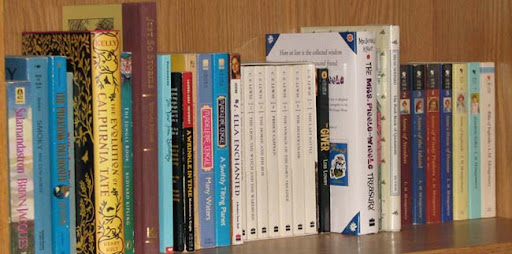Engle, Margarita. 2012. The Wild Book. New York: Harcourt. ISBN: 9780547581316.
Summary:
Josefa (Fefa) lives in Cuba in 1912 with her mother, father, and 10 brothers and sisters. The doctor says Fefa has “word-blindness” (dyslexia) and she struggles with reading and writing. Her mother gives her a blank book and tells her it is like a garden where she can sprinkle words like seeds on the pages. She practices and practices, and slowly realizes she can overcome this “blindness.” She thinks about words, breaks them down into pieces, and discovers the beauty and wildness inherent in language. When a lawless bandit demands a ransom in order to not kidnap Fefa and her siblings, it is Fefa who reads the ransom note and recognizes the handwriting. This leads to the arrest of the farm manager and makes Fefa a heroine.
Analysis:
Engle is a Cuban-American poet, and the story is based on real events in her grandmother’s life, which give an already meaningful story added significance. The novel is in free verse, written from Fefa’s point of view as she fills the blank pages in the book her mother gave her. She writes of the doctor’s diagnosis, and how words jump away from her “like slimy/bullfrogs” (5). She shares her feelings and emotions, and the reader can see her grow throughout the book, from frustration and discouragement to peace and confidence. She also writes of doing chores on her family’s farm, being teased by schoolmates and siblings, going on a vacation to the beach, and enjoying a trip to town with her cousin.
Engle makes Cuba come alive in this book, with references to animals (caimans, manatees, parrots), plants (candy tree, pensamiento flowers, jasmine petals), and customs (boys and girls going on a promenade, roasting a pig for a hunting party, and a poetry duel among the adults). She also describes the various feast days and holidays celebrated in Fefa’s town; Christmas will be familiar to all readers, but the feast day of Santiago may not be. There are also allusions to troubles in Cuba’s past, such as prison camps, and the present troubles of bandits and kidnappers. There are no illustrations except the cover, which shows a beautiful girl with brown skin and black hair who has a book in her hands and a confident expression on her face.
Spanish words are scattered throughout the poems; they are sometimes translated and sometimes can be figured out from context. Still, bilingual readers will enjoy an added dimension to the work.
Reviews/Awards:
Kirkus Reviews New and Notable Books for Children, 2012
"The idea of a wild book on which to let her words sprout is one that should speak to those with reading difficulties and to aspiring poets as well.” School Library Journal
“The author gives readers a portrait of a tumultuous period in Cuban history and skillfully integrates island flora, fauna and mythology into Fefa’s first-person tale. This canvas heightens Fefa’s determination to rise above the expectations of her siblings, peers and society.” Kirkus, starred review
Connections:
* Read Thank you, Mr. Falker by Patricia Polacco, another book about overcoming dyslexia.
* Read more of Margarita Engle’s poetry books about Cuba, such as The Surrender Tree and Firefly Letters.


No comments:
Post a Comment